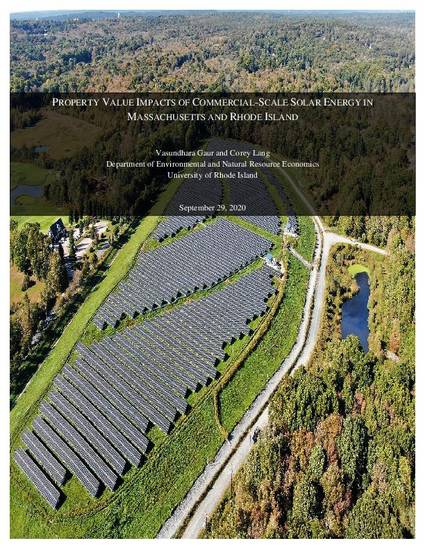
Article
Property Value Impacts of Commercial-Scale Solar Energy in Massachusetts and Rhode Island
University of Rhode Island Cooperative Extension
(2020)
Abstract
While utility-scale solar energy is important for reducing dependence on fossil fuels, solar arrays use significant amounts of land (about 5 acres per MW of capacity), and may create local land use disamenities. This paper seeks to quantify the externalities from nearby solar arrays using the hedonic method. We study the states of Massachusetts and Rhode Island, which have high population densities and ambitious renewable energy goals. We observe over 400,000 transactions within three miles of a solar site. Using a difference-in-differences, repeat sales identification strategy, results suggest that houses within one mile depreciate 1.7% following construction of a solar array, which translates into an annual willingness to pay of $279. Additional results indicate that the negative externalities are primarily driven by solar developments on farm and forest lands in non-rural areas. For these states, our findings indicate that the global benefits of solar energy in terms of abated carbon emissions are outweighed by the local disamenities.
Disciplines
Publication Date
September 29, 2020
Citation Information
Vasundhara Gaur and Corey Lang. "Property Value Impacts of Commercial-Scale Solar Energy in Massachusetts and Rhode Island" University of Rhode Island Cooperative Extension (2020) Available at: http://works.bepress.com/corey_lang/33/
